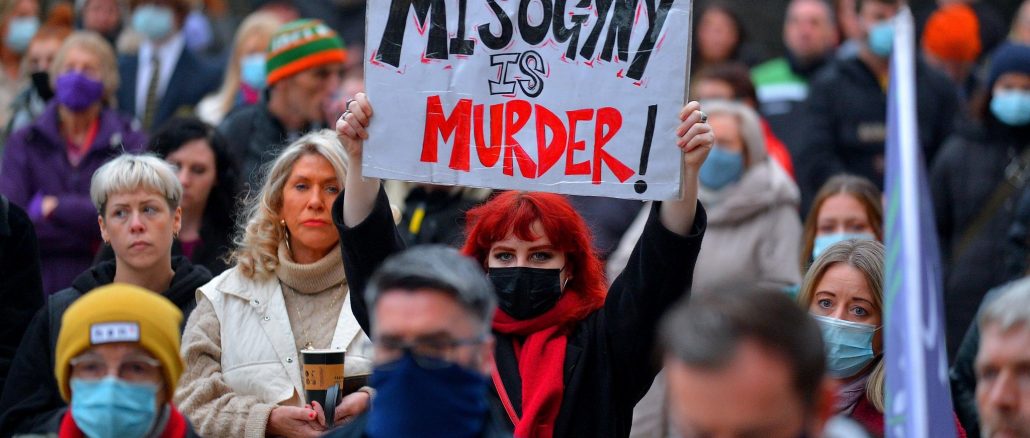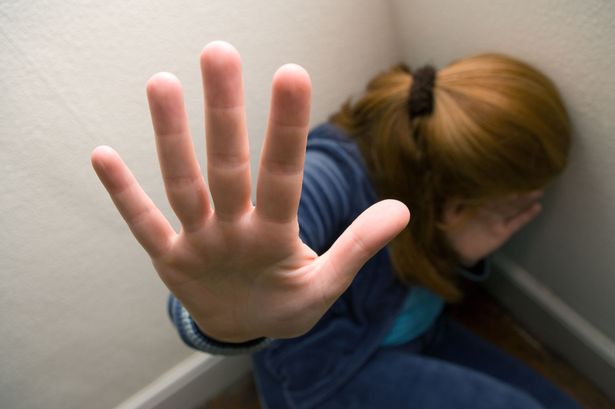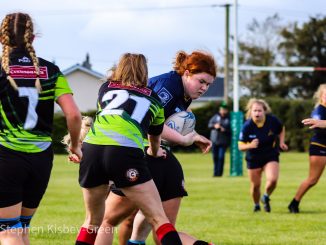
Men’s violence against women saw the deaths of Sarah Everard, Urantsetseg Tserendorj and Ashling Murphy. Recent studies show that the issue remains prominent and many are calling on the government for tangible action.
Sarah Everard was murdered after she was kidnapped by a Metropolitan police officer on her way home from a friend’s house in South London on the 3rd of March 2021. Her death sparked a series of outrage over the role of the police force and safety of women in the UK.
One year on from the death of Everard and the dialogue regarding women’s safety is still present, amid continuous attacks.
In Ireland, schoolteacher Ashling Murphy was murdered as she was out for a run in Tullamore on the 12th of January.
The attack of a woman on Evergreen Street in Cork city on the 29th of January marked another similar incident. In Kilkenny, a teenage girl reported an attempted abduction on the 1st of February. Most recently, a 16-year-old girl was allegedly sexually assaulted in the middle of the day in Fermoy, Co. Cork.
All incidents share a common factor – a male perpetrator. The youngest of whom was just 13 years old.
“Women are not afraid of the dark or a lonely space,” said CEO of Women’s Aid, Sarah Benson, “they are afraid of a violent male perpetrator in the dark. The majority of violence against women, and indeed men, is perpetrated by men. That is something we as a society need to tackle”.
One in three women were harassed in the streets in the last three months according to a recent Red C poll.
The poll, which surveyed 1001 people online, showed that women were likely to be “groped, stalked, assaulted or receive sexually explicit comments in public”. It also reported that 37% of 18-34 year olds have been harassed in public over the past year.
“We need zero tolerance to all forms of male violence against women” said Benson in a statement , “there needs to be investment in resources for education to change attitudes and we need an improved criminal justice system”.
Dr Debbie Ging, a researcher on gender, sexuality and digital media, shared a similar sentiment on tackling the issues, adding that public information campaigns need to “target men rather than women”.
“We need to teach empathy and consent to boys from an early age and shift the focus from the victims to the perpetrators” said Dr Ging in a statement.
We need actions at multiple levels – personal, educational, cultural and legal, according to Dr Ging, who is an associate professor in Dublin City University.
“Firstly the government needs to increase funding to women’s refugees and organisations such as the Rape Crisis Centre. It should appoint a Junior minister for Domestic, Intimate-Partner and Gender Based Violence,” she told The College View.
As well as these changes Dr.Ging is calling for infrastructural modifications “to urban spaces to make women safer”.
A study conducted by the Higher Education Authority shows that sexual harassment and assault is also frequent amongst students.
Incidents of sexual harassment had been experienced by most of the respondents to the study according to the report, which was sent to all higher education institutions in Ireland.
“Nearly all forms of sexual harassment and assault described in the survey had been experienced by the majority of students”
HEA Report Conclusions
Six out of ten students reported experiencing sexualised comments and 32% of females said they experienced it “often” or “many times”.
The study also found that females were more likely to not tell anyone of their sexual harassment out of embarrassment.
The pattern of “ignoring the person and doing nothing” shows the need to “prioritise the empowerment of individuals exposed to harassment” according to the report, whose authors include Dr Padraig MacNeela, a lecturer in Phycology in NUI Galway and Dr Kate Dawson, a PHD researcher whose studies include phycology and sexual health.
This “prioritisation” of women involves shifting the focus from attackers to victims, giving confidence to those who have been sexually assaulted whilst serving as a warning to perpetrators, according to Dr Ging.
“The message that needs to be heard loud and clear is that there will be a relentless pursuit of perpetrators…this is where the criminal justice system comes in – research shows that the likelihood of being held to account is the strongest deterrent to a crime” she told The College View.
The issue of men’s violence against women is part of a “system of misogyny” according to Rape Crisis Centre NI’s Executive Director Cliona Sadlier. It’s a statement echoed by Dr Ging – “it’s not just a few bad apples – it’s a systematic set of strategies used to keep women in a position of subordination to men”.
Jessica Woodlock
Photo Credit: Derry Journal



